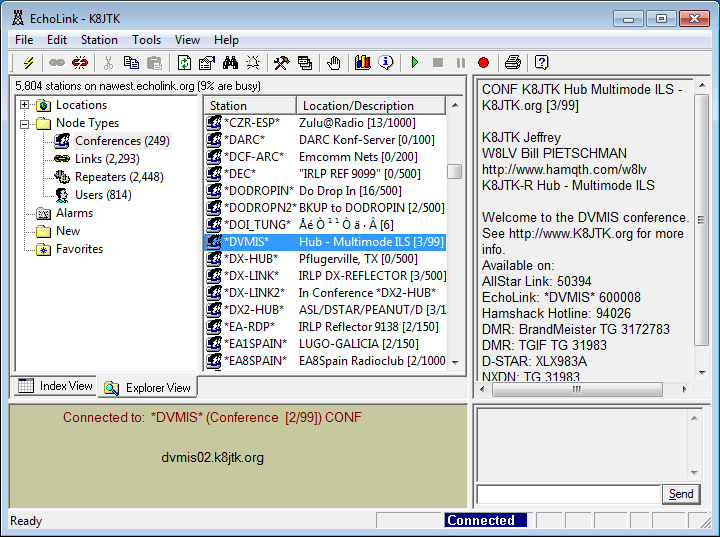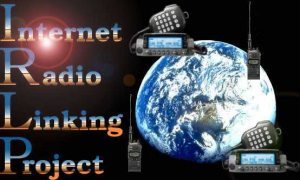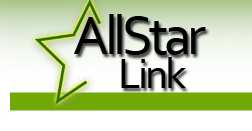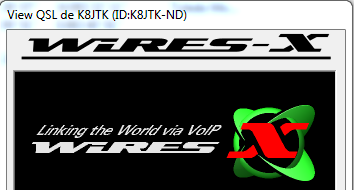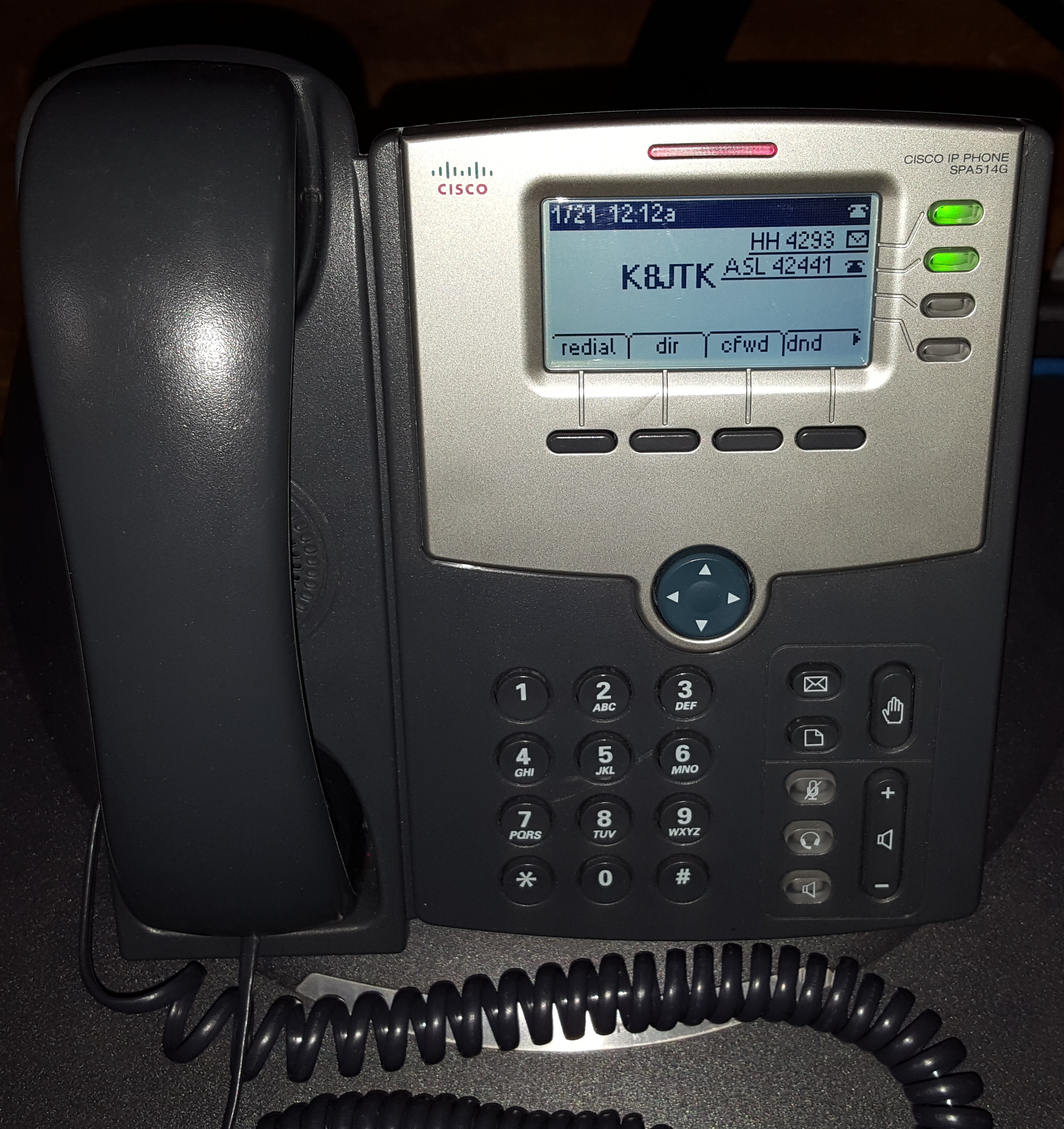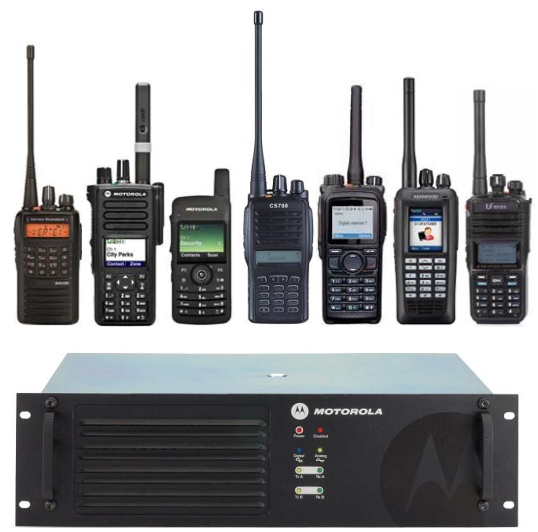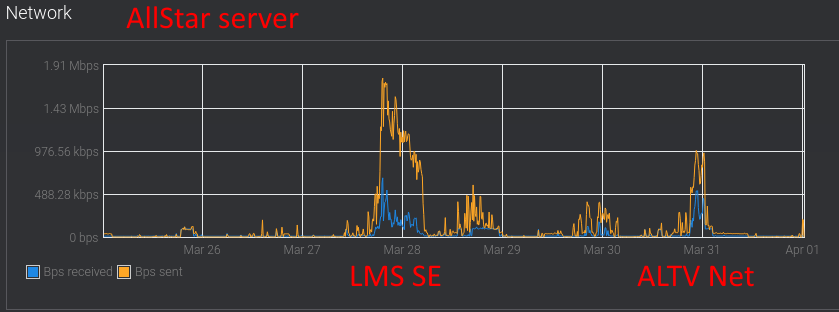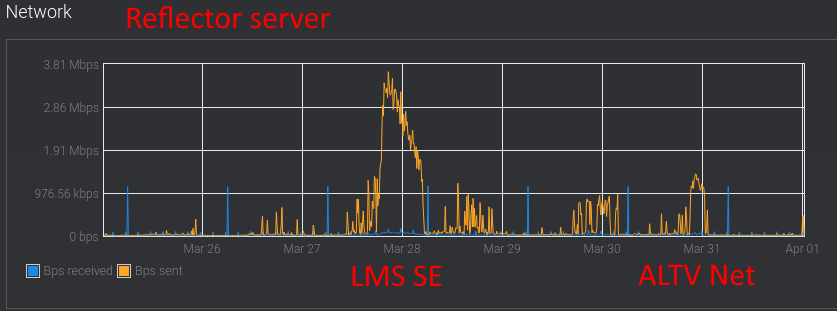Ham Radio VoIP
and the Digital VoIP Multimode
Interlink System
Jeffrey Kopcak - K8JTK
ARRL Ohio Section Technical Coordinator
Technical Coordinator
The ARRL Technical Coordinator (TC) is a section-level official appointed by the Section Manager to coordinate all technical activities within the section.
- Supervise and coordinate the work of the section's Technical Specialists (TS)
- Refer amateurs in the section who need technical advice to local TS
- Encourage amateurs in the section to share their technical achievements with others through the pages of QST, at club meetings, hamfests, and conventions
Technical Coordinator
- Be available to assist local technical program committees in arranging suitable programs for local club meetings, ARRL hamfests, and conventions
- Promote technical advances and experimentation at VHF/UHF and with specialized modes, and work closely with enthusiasts in these fields within the section
Technical Specialist
For a section team to be effective in one of the most important arenas in Amateur Radio, technology, there must be a cadre of qualified, competent Technical Specialists (TS).
"Advancement of the radio art" is a profound obligation we incur under the rules of the FCC.
TSes help meet this obligation.
Technical Specialist
TS supports the TC in two main areas of responsibility:
Radio Frequency Interference and Technical Information.
Technical Specialist can specialize in certain specific technical areas, or can be generalists.
Outline
- What is VoIP?
- Analog systems
- Digital systems
- DVMIS/K8JTK Hub
- Software used
- Connection links
- Dashboards & diagrams
- Problems
- Nets
What is VoIP?
Voice over Internet Protocol (VoIP), also called IP telephony, is a method and group of technologies for the delivery of voice communications and multimedia sessions over Internet Protocol (IP) networks, such as the Internet.
Ham VoIP
- New, as of about 2002
- Networks or Internet for long distance communication, not ionosphere
- Mostly 2m or 440, some 220 & 6m (VHF/UHF)
- Repeaters and simplex node linking, some user/non-RF
- Internet-aided DXing for Technicians, not interested in HF, not capable
- Occasionally called "RoIP" for Radio over IP, at least one radio device has an IP connection
- Mostly independent, own islands
Ham VoIP - Analog Systems
Uses

img: QST, Feb 2003
- Common install:
- PC/Pi running Windows/Linux
- Interface: circuit, audio FOB, RIM, URI, RTCM (EOL), HRI, ...
- Transmitter: repeater, link/simplex radio, or none (radio less)
- Access other nodes: DTMF
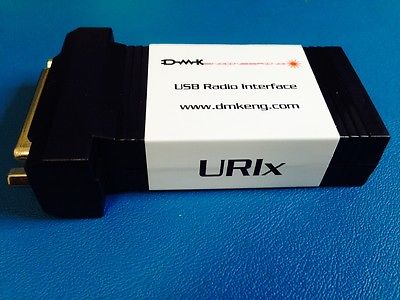
img: DMK Engineering
Echolink
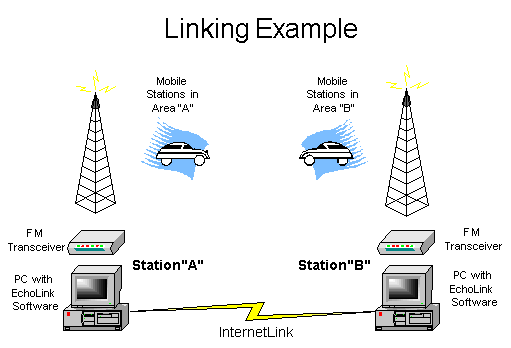
img: Echolink
- Early 2002 by Jonathan - K1RFD
- Quick adoption. 30,000 nodes ~1 yr
- User = K8JTK, Link = K8JTK-L, Repeater = K8JTK-R, Conference = *DVMIS*
- Port forwarding (firewall), specific ports. One node per IP.
- Proxies
- Closed source, reverse engineering OK
- Resurgence mobile apps
- Echolink. Windows, OS X, Qtel (Linux), SVXLink, Android, iOS
IRLP
- Started 1997 by Dave - VE7LTD
- Only accessible via radios
- node -> node or node -> reflector
- Approved or specialized hardware required, source of income
- Linux install. Closed source. Network tightly controlled.
- NO experimentation. Booted reverse engineering, cross connecting modes.
- EchoIRLP - Echolink or IRLP, not both same time
- Experimental reflectors, 2018
- IRLP
AllStar Link
- AllStar - open-source PBX Asterisk, Linux
- AllStar Link - network, phone directory
- Started 2008 by Jim - WB6NIL (SK)
- app_rpt module designed as repeater controller
- Public Internet or private network
- Multiple nodes on single IP
- Every node is a reflector, multiple connections
- Can be radio-less
- Stability issues: software, network, foundation
- Native support: Echolink, IRLP (until removed), D-STAR w/ DNGL
- AllStarLink
HamVoIP & PTTLink (ASL forks)
- Low adoption AS/ASL
- HamVoIP: 2014 by Doug - WA3DSP & David - KB4FXC
- Forked project: built-on and fixed ASL issues
- Raspberry Pi only
- Compatible with AS & ASL
- NOT open-source! Changes unclear.
- Grew AllStar popularity
- HamVoIP
- PTTLink: more drama
- Near as I can tell: ousted crew from ASL project end of 2020
- Forked the network
- Compatible with AllStar, not AllStar Link
- < 20 active nodes
- PTTLink
WIRES-X
- Wide-coverage Internet Repeater Enhancement System by Yaesu
- WIRES (beta), WIRES-II (until 2017), WIRES-X
- Proprietary network and hardware to Yaesu
- Analog possible non-Yaesu equipment. Digital ONLY on Yaesu C4FM capable radios & repeaters.
- Windows ONLY!
- WIRES-X
- YSF/YSFReflector = Open-source reflector & linking system
- WIRES-X/WIRES-X rooms = Closed-source system for Yaesu
Hamshack Hotline
- Not a radio linking system
- Started 2018 John – K1WIZ
- Uses Asterisk
- Requires a SIP (Cisco) phone & Internet connection
- Full duplex, direct dialing, voice mail, notifications, conference rooms, ...
- Popular in EOCs
- Experimental server non-supported devices, "on your own"
- HH users can dial into Radio Services
- Range: $20 - $50
- Hamshack Hotline
Ham VoIP - Digital Systems
- D-STAR
- DMR
- System Fusion
- NXDN
- P25
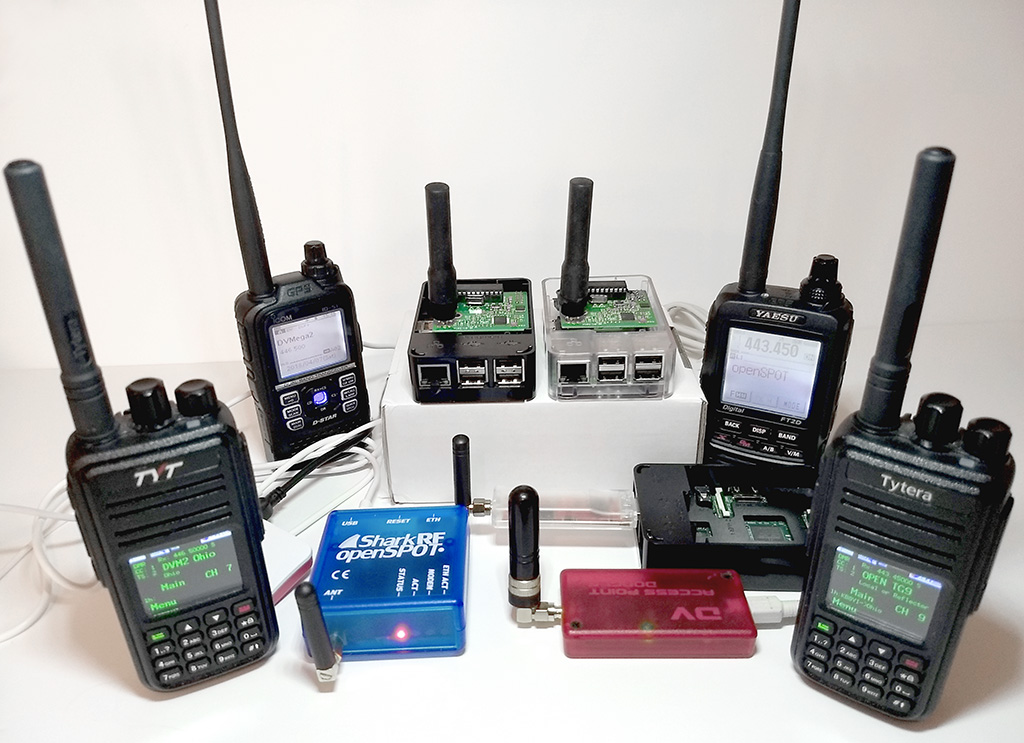
img: QRZNow
Uses
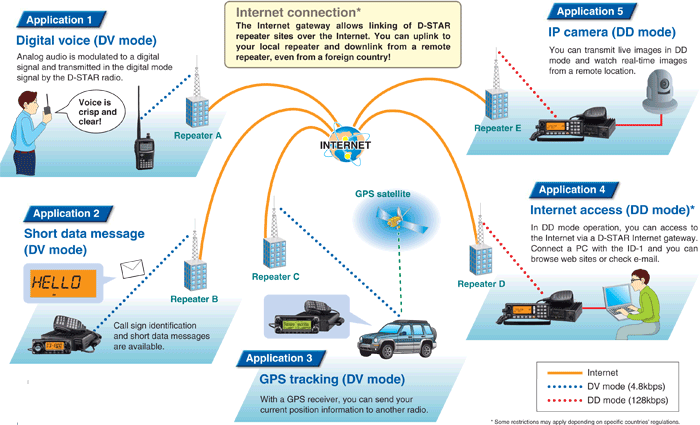
img: ICOM
- Common install:
- Gateway software for routing
- Interface: controller, MMDVM board, DV4Mini, DVMega, OpenSpot, dongle, HRI, ...
- Transmitter: repeater, hotspot, link radio, or none at all (radio less)
- Access other nodes: structured control system (TG, Reflector, Room, ...)
- Apps: DUDE-Star (Win), DROID-Star (Android)
D-STAR
- Digital Smart Technologies for Amateur Radio
- Developed late 1990s by Japan Amateur Radio League
- First designed for ham radio
- Open protocol, proprietary codec
- Simultaneous voice & data
- Network, D-RATS
- High-speed data (128 kbps), not used
- Registration
- HF, VHF, UHF, SHF. Satellites.
- DPLUS, XRF, DCS/XLX?
- ICOM & Kenwood (exiting?)
- Useless manual
- Range: $300 - $1300
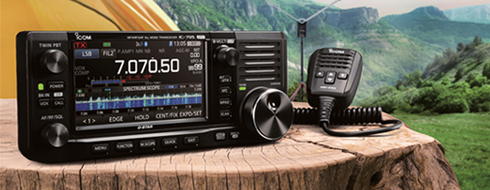
img: ICOM
DMR
- Digital mobile radio
- Developed by European Telecommunications Standards Institute (ETSI), published 2005
- Adopted by ham radio
- Talkgroup, RX group, contact, scan list, channel, zone
- 2 "slots" per repeater
- Open protocol, proprietary codec

img: Hytera
DMR
- Registration required
- DMR-ID is NOT a callsign!
- Programming requires computer
- VHF & UHF (inc 900 MHz)
- TYT, Connect Systems, Bridgecom, Alinco, Motorola, or any Tier-2 radio
- Range: $90 - $750
System Fusion
- Released in 2013 by Yaesu
- Easiest to use
- Proprietary standard & codec
- "Eternal beta" - redesigns, repeater issues, firmware, ...
- Compatible with analog
- VHF & UHF
- Yaesu - single manufacturer
- Cheap repeaters, "promo"
- WIRES-X linking
- Range: $175 - $1200
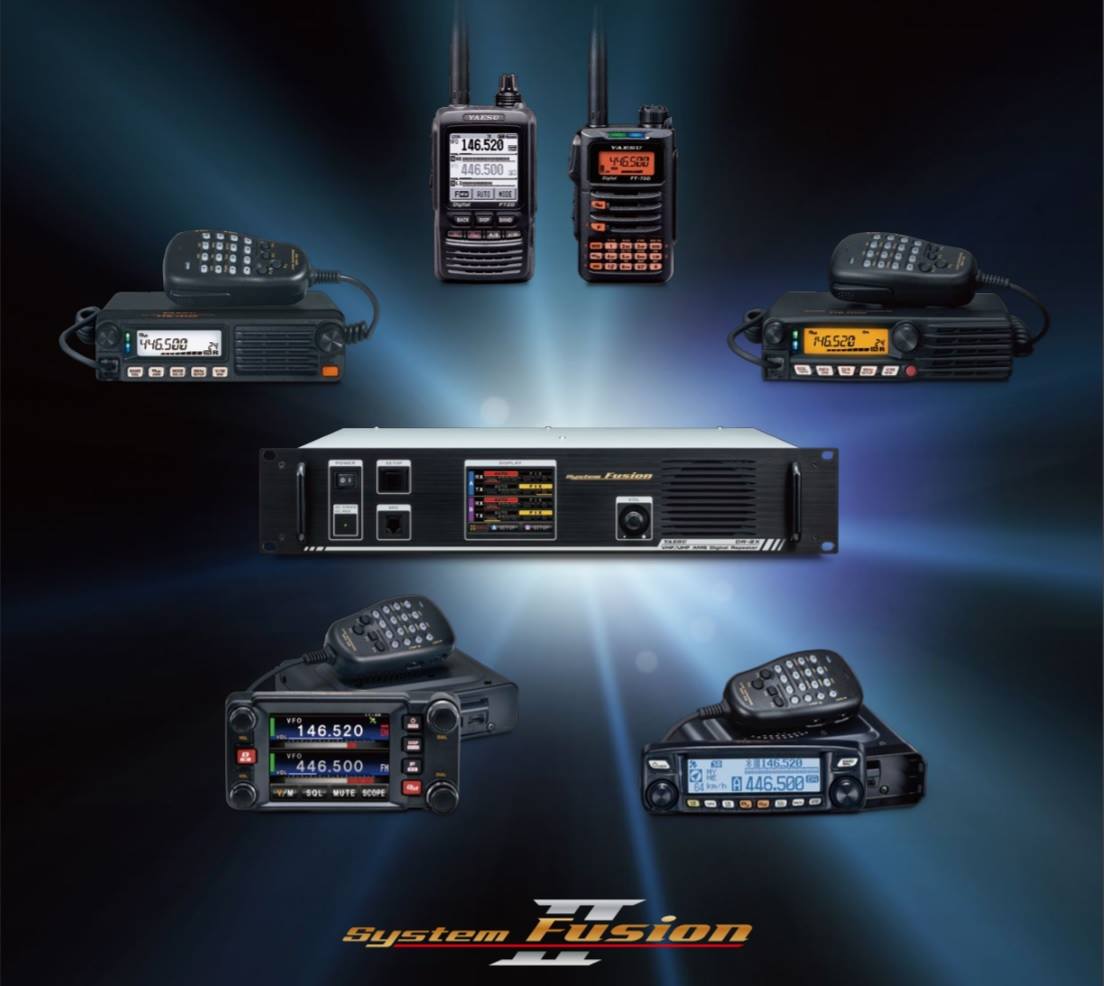
img: Yaesu System Fusion
NXDN & P25
- NXDN: ICOM & Kenwood in 2005
- P25: collaboration started 1989
- Public safety
- Motorola, Kenwood, Tait, EFJohnson, ...
- Both: open standards
- Adopted by ham radio
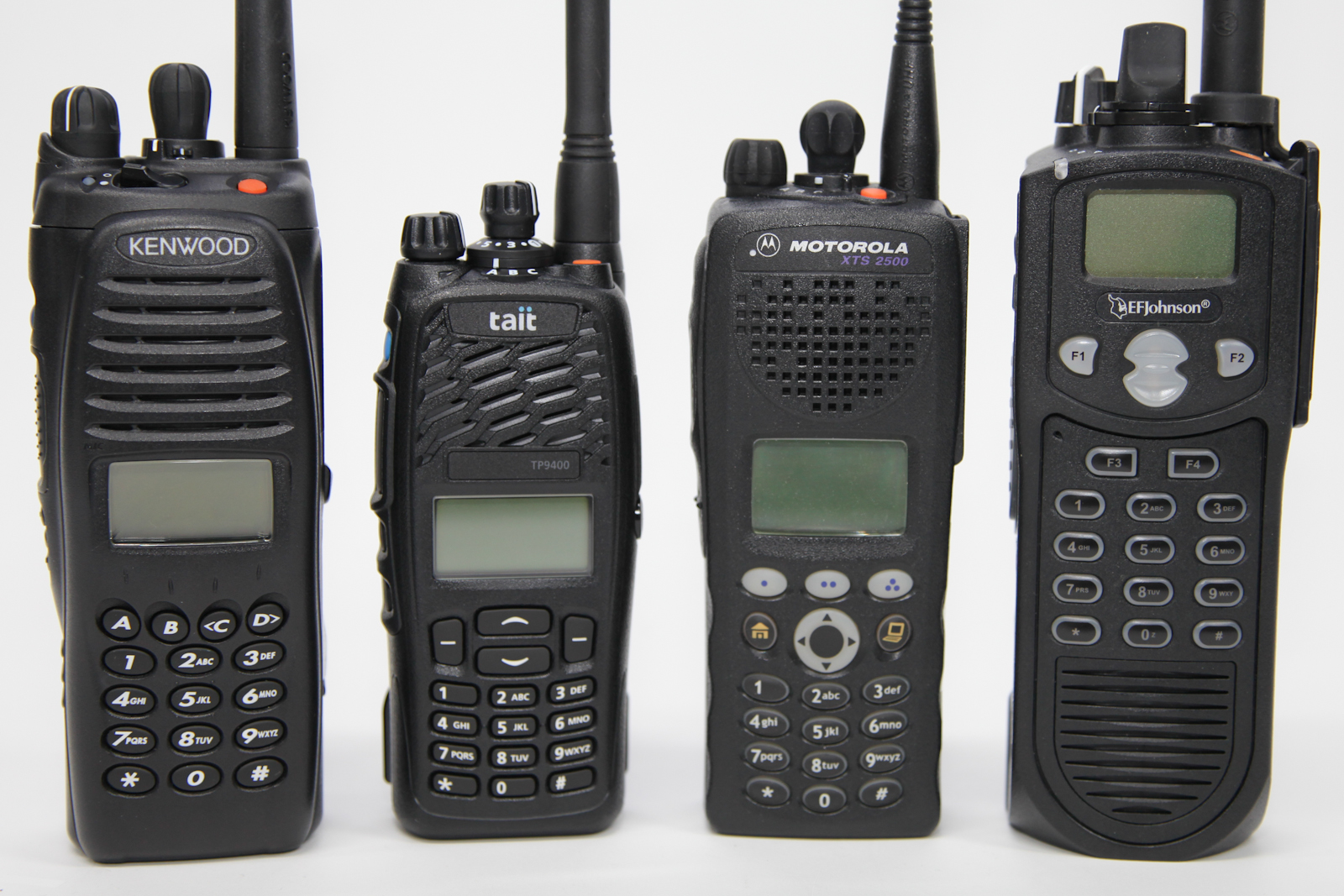
img: Wikipedia
M17
The goal here should be to kick the proprietary protocols off the airwaves, replace DMR, Fusion, D-Star, etc. To do that, it’s not just good enough to be open, it has to be legitimately competitive.
- Started 2019
- Freely available and modifiable digital radio protocol, open hardware
- Codec2
- Needs ALOT of work
- M17
TeamSpeak, Zello, ...
- Non-ham specific
- Some commercial
- Don't have to be licensed
- Linked to transmitters, unlicensed violations
- Banned on some networks (Brandmeister)
Is VoIP ham radio?
- Nooooo shortage of opinions
- Both ends a radio
- Younger and older hams alike finding uses
DVMIS
Digital VoIP Multimode
Interlink System
(K8JTK Hub)

Why, in the world...?
- Ham radio experimentation
- Support open source projects
- Interlink ham radio VoIP modes for interoperability
- Utilize ham radio spectrum
- Reliable and resilient - hardware, power, weather
- Fairly inexpensive (COM compliant?)
Packages: AllStar Link
AllStarLink is a world wide network of Amateur Radio repeaters, remote base stations and hot spots accessible to each other via the Internet and/or private IP networks
- Open-source PBX Asterisk
- Linux (including Raspberry Pi)
- Jim Dixon - WB6NIL (SK)
- app_rpt module - repeater controller
- AllStarLink
img: luis gomes
Packages: G4KLX
Programs that support D-Star, DMR, System Fusion, P25, NXDN
- Jonathan - G4KLX
- ircDDBGateway, NXDNReflector, NXDNGateway, P25Reflector, P25Gateway, YSFReflector
- MMDVM implemented in devices, boards, hotspots like Pi-Star and OpenSpot
- github: G4KLX
Packages: DVSwitch
Tools and programs related to provisioning and operating Amateur Radio digital voice networks
- Steve - N4IRS & Michael - N4IRR
- MMDVM_Bridge (hacked MMDVM), Analog Bridge, and md380-emu (KK4VCZ md380tools) / OP25 (Osmocom, others) codecs
- Linux based
- DVSwitch Mobile Android app + Pi/Linux server = multimode HT
- ASL to DMR documentation (groups.io account required)
- Groups.io: DVSwitch
Packages: XLXD
XLX Multiprotocol Gateway Reflector Server is part of the software system for the D-Star Network
- Jean-Luc - LX3JL & Luc - LX1IQ
- Four D-STAR reflector protocols: REF, XRF, DCS, XLX
- XLXD speaks all four protocols +
- DMR and YSF transcoding (not used, additional hardware)
- github: XLXD
Packages: thebridge
CQiNet is a family of programs that combine Ham Radio with the Internet using Voice over IP (VoIP) technology
- Skip - WB6YMH & others
- EchoLink compatible conference bridge
- Sourceforge: Thebridge
Packages: HBLink3
...we have an open protocol for internetworking DMR repeaters. Unfortunately, there's no generic client and/or master stacks. This project is to build an open-source, python-based implementation.
- Randy - AA6RH
- Open Source HomeBrew Repeater Protocol Client/Master
- github: HBLink3
Packages: mrefd
An M17 Reflector.
- Tom - N7TAE
- Open Source M17 reflector based on XLXD
- github: mrefd
Packages: USRP2M17
... converts USRP PCM audio and M17 digital mode ...
- Doug - AD8DP
- Part of MMDVM_CM - cross-mode conversion for some digital voice protocols, based on Jonathan G4KLX's MMDVM software.
- github: USRP2M17
Putting it together
Chicago data center
- Three VPSes (virtual private servers)
- Linux Debian OS
- Low latency to remote hardware
Remote hardware
- Raspberry Pi & NW Digital Radio DV3000
- Wires-X: HRI-200 & FTM
- Hardware in data center = $$$
- Twelve different networks! Nine full-time modes!
- Any user on one network can communicate with users on any other
- AllStar is the "Hub", individual nodes for control
img: Pixabay
DVMIS: The Nodes
- AllStar Link: 50394
- DMR: HB_US_K8JTK-HUB-DVMIS_DMO TG: 31983 TS: 2
- DMR: Brandmeister Talkgroup (TG) 3172783
- DMR: TGIF Talkgroup (TG) 31983
- D-STAR: XLX983A - "A" for Analog Bridge
- EchoLink: *DVMIS* 600008
- Hamshack Hotline: 94026 *99 - TX, # - RX
- M17: M17-983A
- NXDN: TG 31983
- P25: TG 31983
- YSF: K8JTK-Hub 31983
- Wires-X: K8JTK-ROOM 40680
Info on connecting, systems, radios, status, and more: DVMIS @ K8JTK.org
DVMIS: Dashboards
- AllStar Link & Hamshack Hotline: Allmon2.K8JTK.org, Bubble Chart
- DMR: HBMon3
- DMR: Brandmeister TG 3172783 Last Heard, TGIF Last Heard & TGIF Active TG
- D-STAR: XLX983.K8JTK.org
- M17: M17-983.K8JTK.org
- NXDN: NXDNReflector31983.K8JTK.org
- P25: P25Reflector31983.K8JTK.org
- YSF: YSFReflector31983.K8JTK.org
- Allmon2: 1XXX are private AllStar nodes
- K8JTK call seen ALOT on dashboards: "default" callsign, calls lost in analog conversion
img: freestocks.org
Operating
- Follow all rules of your regulatory authority
- Keep it classy
- English only
- Identify your station by voice. Digital stations are used to quick-keying to break-in or check-in, this will not work. IDs in data streams are lost due to analog and cross-linked connections. Users on non-radio VoIP solutions tend to forget they’re on a radio system. Proper ID is required and accepted method is by voice.
Operating
- Press PTT and pause for 2 seconds before speaking. This gives time for all links to become operational otherwise, the first couple words of the transmission will be lost.
- Pause a minimum 3-5 seconds between transmissions. Stations cannot break-in when stations quickly key-up (or "tailgate") after the previous. System timeouts are caused when links are not given proper time to reset.
Pretty pictures:
Logical connections
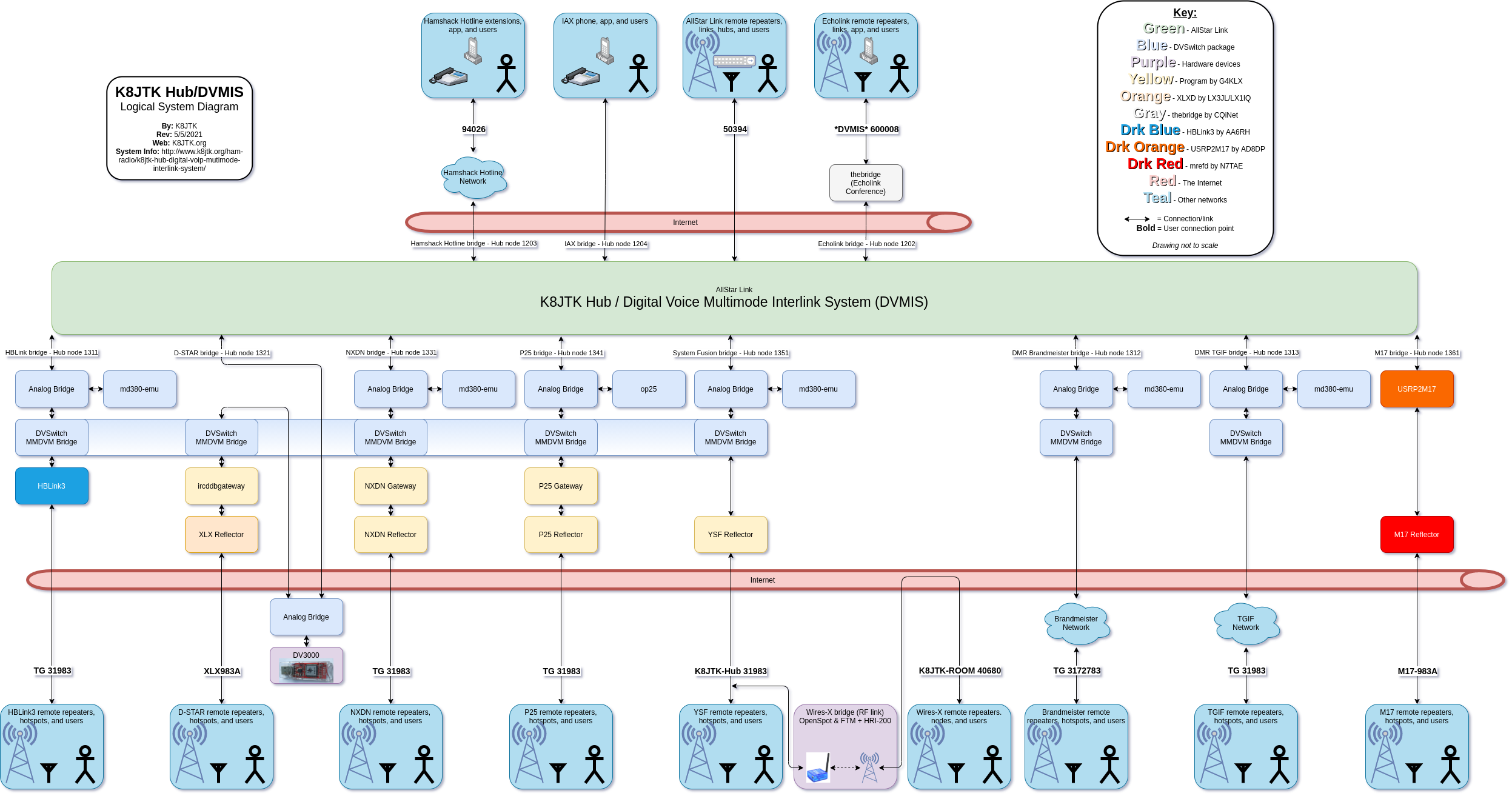
Pretty pictures:
IP connections
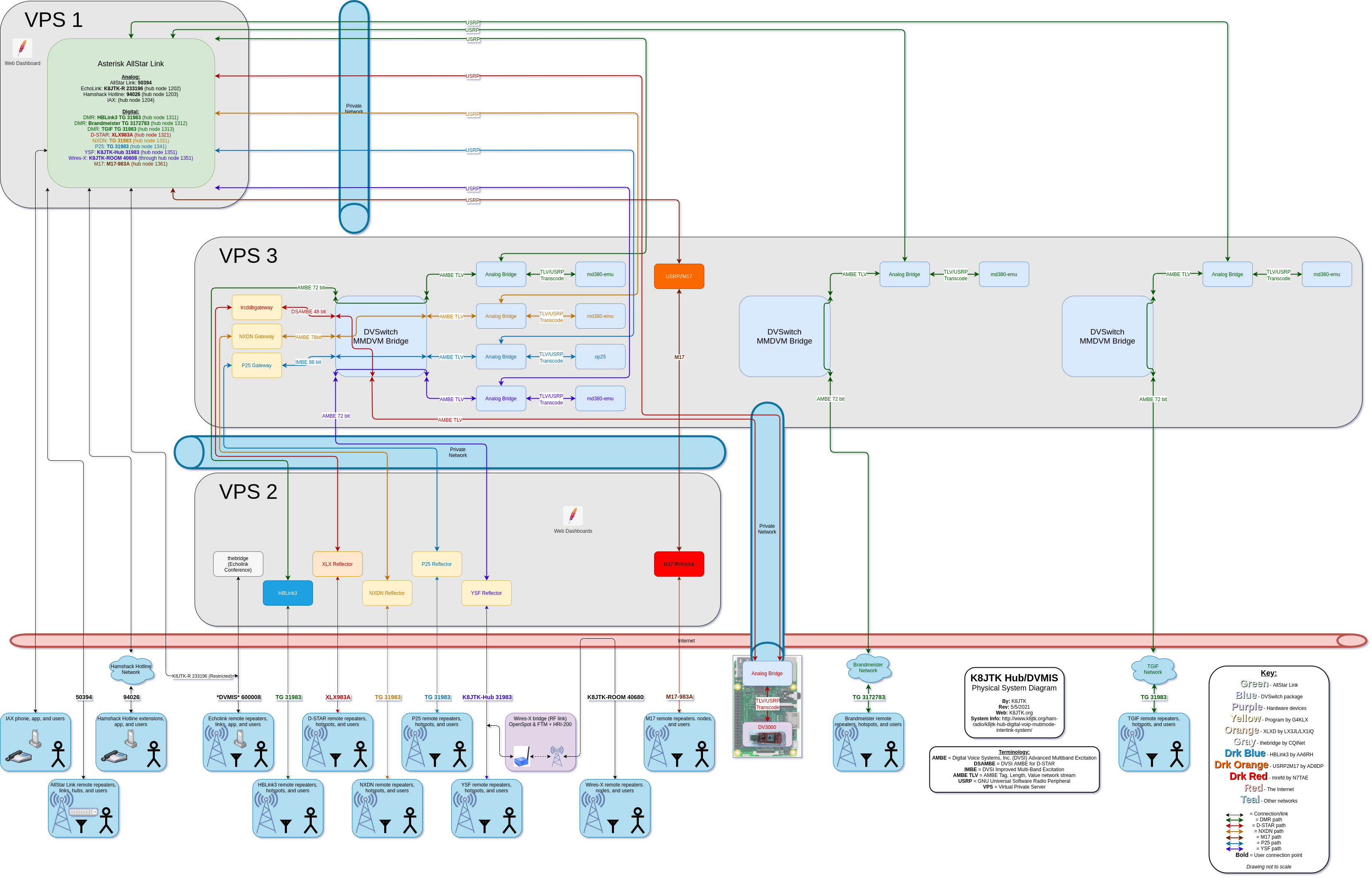
Problems?

Problems:
- IP based, keeping all the ports straight!
- 😞 Dependency hell: addons and changes to programs
- Protocol and implementation changes: XLX & YSF, YSF choose reflector number
- DVSwitch implementation rewrites: 2x already
- 😠 Data Center provider: packet loss, "internal problems" - 1 move
- D-STAR hardware. Codec: "you won't be happy"
- D-STAR & M17 LOOOOOVES IP addresses
- D-STAR Analog Bridge choppy audio with AMBED
- AllStar compiling
- 😡 AllStar chan_echolink module. Kill me now.
Nets
- WCARA (WC8VOA) Club net: Mondays @ 8pm-9pm
- AmateurLogic.TV Sound Check net: Tuesdays @ 9pm-midnight
Huge thanks for ALTV being a test of the system!
Last Man Standing SE - KA6LMS
- Multimode QSO Party sponsored by: AmateurLogic.TV
- Part of the week-long event commemorating nine seasons of LMS
- WAY more popular than anticipated!
- 8.5 hours!
- 300 counted stations, 500 total
- 20GB traffic
- Recap

THE END
Jeffrey Kopcak - K8JTK
ARRL Ohio Section Technical Coordinator
- K8JTK@arrl.net
- Contact me for nets or other uses of DVMIS
- This presentation is available on my website under the "Presentations" category: K8JTK.org
DVMIS: DEMO
- AllStar: 50394
- DMR: HB_US_K8JTK-HUB-DVMIS_DMO TG: 31983 TS: 2
- DMR: BM TG 3172783
- DMR: TGIF TG 31983
- D-STAR: XLX983A
- EchoLink: *DVMIS* 600008
- Hamshack Hotline: 94026
- *99 - TX, # - RX
- NXDN: TG 31983
- M17: M17-983A
- P25: TG 31983
- YSF: K8JTK-Hub 31983
- Wires-X: K8JTK-ROOM 40680
Local meeting:
- Analog (ASL): 446.975 simplex, no PL
- Hotspot 1 (YSF): 433.125
- Hotspot 2 (D-STAR): 445.050
AllStar Dashboard
Info on connecting, systems, radios, status, and more: DVMIS @ K8JTK.org
